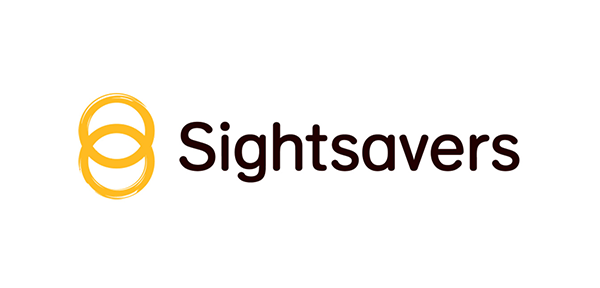Protecting the sight of those at risk
Nearly half of visual impairments can be treated or prevented. But many communities at risk of the neglected tropical disease (NTD), river blindness, are in highly inaccessible areas of sub-Saharan Africa. Since 1950, the charity Sightsavers has been preventing sight loss around the world. They are now using ArcGIS to locate and treat nomadic at-risk communities and share their findings with local government, humanitarian and medical organisations.
Satellite imagery is used with ArcGIS Pro and ArcGIS Explorer to inform more impactful treatment programmes.
Fieldworkers have access to identified routes to reach remote locations, allowing them to work more quickly and efficiently.
Transparency and knowledge sharing are made possible through ArcGIS Online and an Open Data Portal, configured with ArcGIS Hub.
The Challenge
NTDs are parasitic and bacterial infections, some of which can be a major cause of blindness. River blindness, or onchocerciasis, is an NTD spread by the bite of infected blackflies that breed in fast-flowing rivers. 205 million people are at risk of contracting river blindness which, if untreated can result in permanent loss of sight.
As well as pain, blindness and the associated stigma, river blindness causes people to move away from fertile river valleys; they end up struggling to find areas to farm or grow crops, pushing families and communities into poverty.
The flies that spread the disease become re-infected from untreated groups of people, bringing the disease back. Yet this disease is preventable, can be treated, and even eliminated.
More than 99% of those infected live in sub-Saharan Africa, often in conflict zones and rural, inaccessible areas. Of particular concern are previously unknown and unreachable nomadic communities who do not have the knowledge of or access to the treatments that can prevent irreversible blindness.
Sightsavers is determined to eliminate avoidable blindness and support equal opportunities for people with visual impairments and other disabilities. Finding the most efficient and reliable means of locating, reaching and offering nomadic communities the opportunity to participate in their treatment programme, is one of the charity’s biggest challenges.
“Taking an innovative approach to fighting disease is at the heart of our mission. Using ArcGIS has helped us to not only locate and treat those at risk in the field, but also monitor treatment progression and communicate our projects’ vital findings and success more widely.”
Alexandre Chailloux, Research Associate: Spatial Analysis, Sightsavers
The Solution
Sightsavers has worked with ArcGIS since 2013 and, having worked with Esri’s Professional Services team and undertaken a number of training courses, now uses GIS across multiple departments to solve different problems.
To address this specific challenge, the charity has developed a tailored approach to better reach these nomadic communities. This includes using nomadic guides and local drug distributors, creating materials in the local language, and exploiting satellite imagery to find where camps are located. Many of these camps are so remote they are only accessible by motorbike or by foot.
Access to hi-res imagery from Esri’s Living Atlas identifies the location of potential settlements which are categorised as “Probable” or “Less Probable”. Using ArcGIS Pro these findings are then compared with the most recent satellite imagery available to update the results.
Using ArcGIS Explorer, route locations to settlements are identified and downloaded onto mobile devices to help fieldworkers visualise where camps are located. Importantly, the App can be used even in areas where there is no network coverage. Dashboards visualise the movement of guides in the field to monitor the progression of treatment and ensure that all fieldworkers are safe.
This GIS-led approach has already helped Sightsavers to identify a number of nomadic settlements which were previously totally unknown to local guides. On one programme 85% of the “Probables” were identified as actual settlements, as were 29% of the “Less Probable”. These research findings in conjunction with local knowledge and expertise are now being used to refine the search criteria methodology to further enhance the accuracy of future initiatives.
Furthermore, Sightsavers is transforming how it is engaging and collaborating with staff, stakeholders and broader communities through its Open Data Portal. Configured using ArcGIS Hub, ‘MyPortal’ enables anyone interested in Sightsavers’ work with NTDs to download publicly accessible NTD data tools and resources, view its library of NTD StoryMaps, and explore an interactive map of its research activities.
“Out in the field we need to verify if camps previously identified by satellite imagery are actual camps where nomads live. With ArcGIS tools we can reach these communities more quickly, census the camps and then prepare people for treatment; we don’t want to leave anyone behind.”
Kareen Atekem, Research Coordinator, Sightsavers
Benefits
Effective planning
ArcGIS Pro enables the spatial analysis team to manipulate and assess satellite imagery to define the most probable areas where remote and previously unidentifiable communities are located. This can be quickly and efficiently achieved and, using ArcGIS Explorer, precise routes are downloaded to mobile devices, so fieldworkers can reach and treat those in need, more speedily.
Increased Efficiency for Fieldworkers
Despite often being offline fieldworkers have clear guidance and routes as to how they can reach isolated and often remote locations communities, as quickly as possible. Dashboards monitor their progress, back in the office, keeping everyone updated on progress.
Transparency and Knowledge Sharing
The Open Data Portal was easily configured using ArcGIS Hub and acts as a transparent community engagement platform. Communication and collaboration are maximised with stakeholders. Data and findings are more broadly shared, internally, and externally, helping to improve outcomes. Featured StoryMaps provide visually impactful, compelling stories which further extend outreach and advocacy and act as educational tools while delivering vital information in an easy to absorb manner.
Helping the Vulnerable
The use of GIS by humanitarian services helps organisations to work more efficiently and, for Sightsavers, deliver life-changing treatments to those at risk. Using satellite data to research different treatment areas and aligning results with treatment programmes, informs decision making and makes a positive impact on avoidable blindness.



